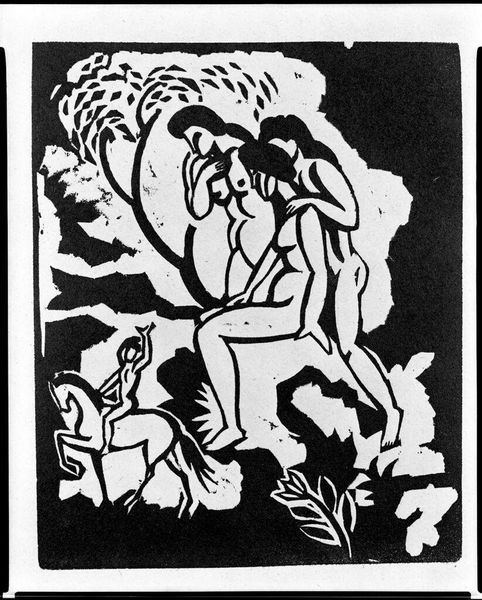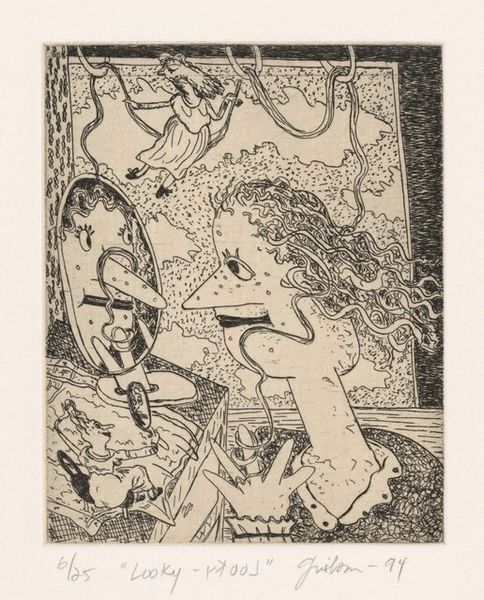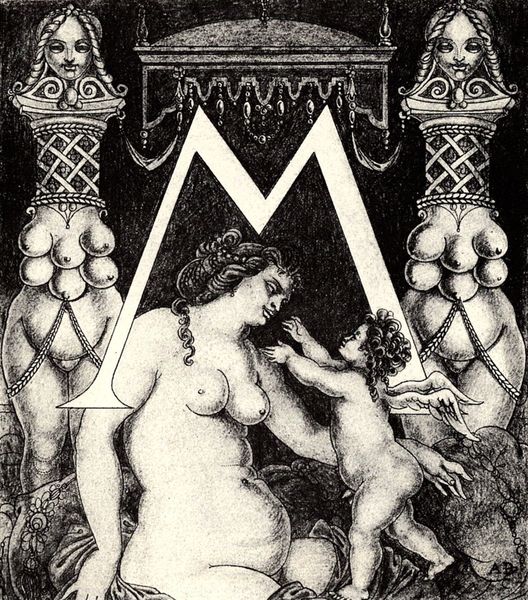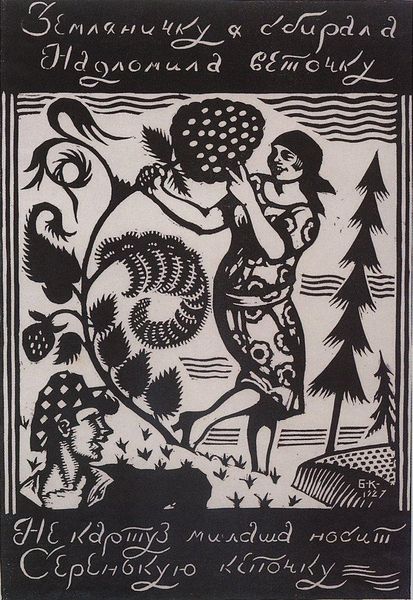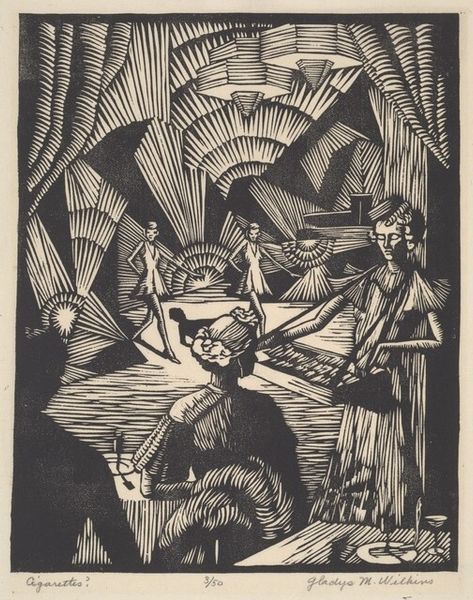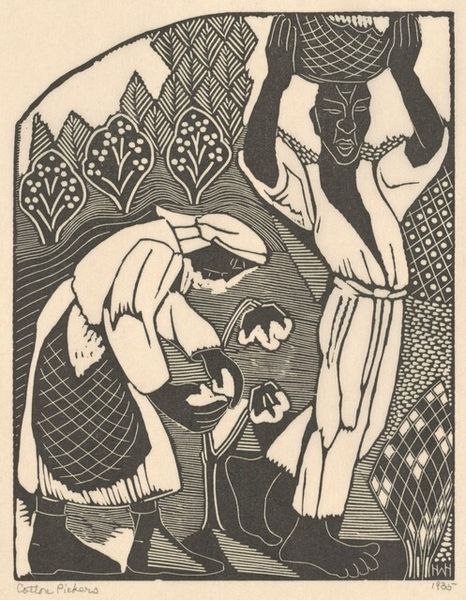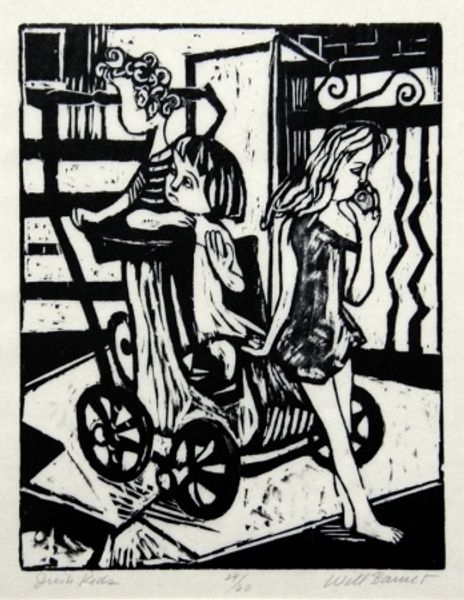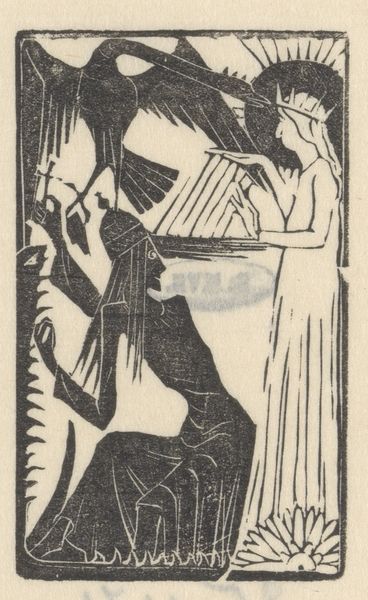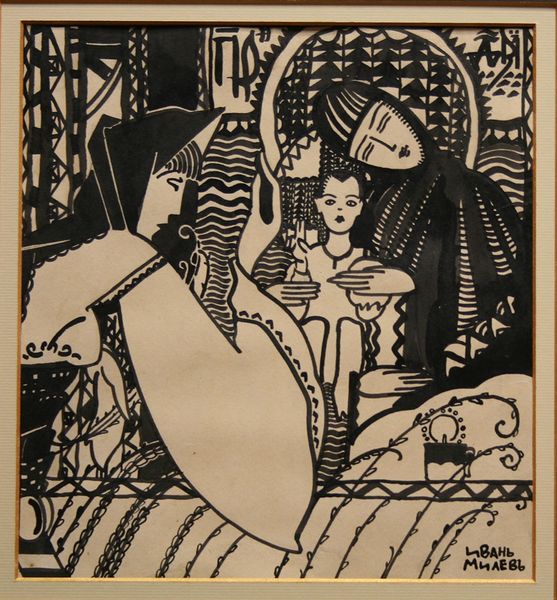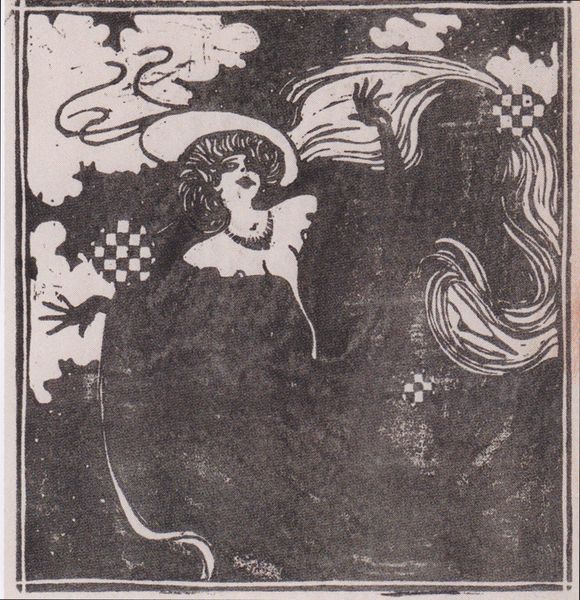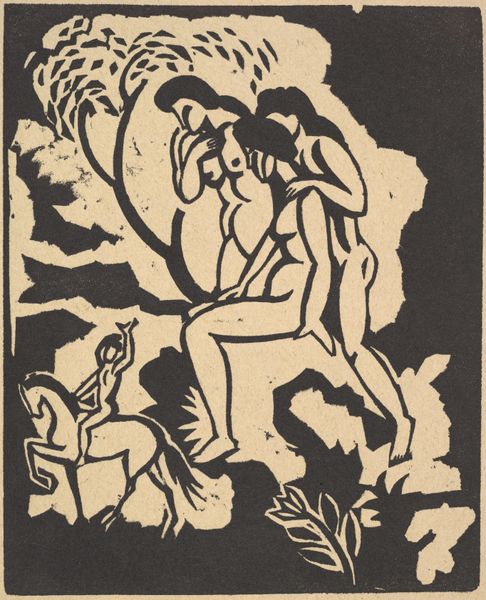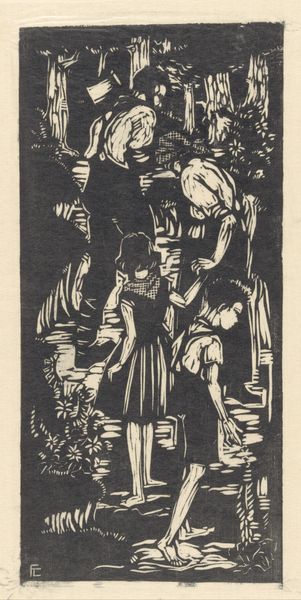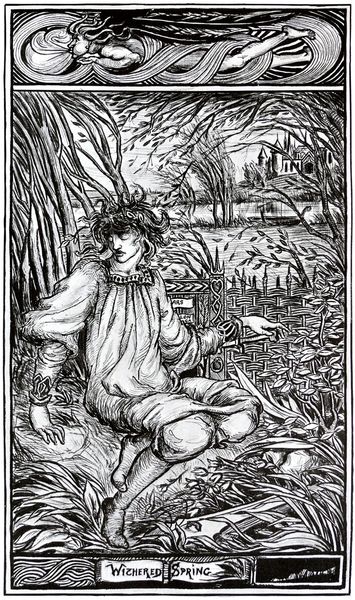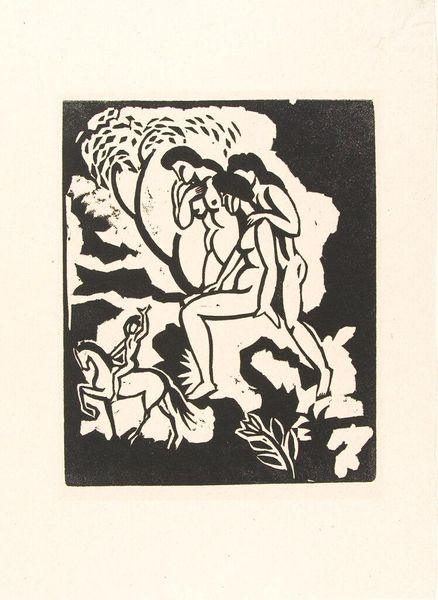
print, woodcut, poster
#
portrait
# print
#
woodcut
#
russian-avant-garde
#
genre-painting
#
poster
Copyright: Public domain
Editor: So, here we have Boris Kustodiev's "Under Honey's Harmonica" from 1927, a woodcut print. The stark black and white gives it a really graphic feel, almost like a poster. There’s this folk-art energy, a kind of joyful, defiant spirit… How do you read this piece? Curator: It’s fascinating to consider this within the context of the Russian Avant-Garde and the socio-political shifts of the 1920s. Kustodiev, while celebrated, wasn’t always aligned with the radical avant-garde. His work often engaged with folk culture, but through a lens that could be interpreted as both celebrating and, perhaps subtly, critiquing the idealized vision of peasant life promoted by the state. What do you make of the text surrounding the image? Editor: Well, I see the text... it’s hard to translate perfectly, but roughly, “Under Honey’s Harmonica… why am I a bad girl? Ha-ha!” I wonder if the artist, despite his own success, is using this scene to critique the prescribed role for women at the time. It's almost subversive. Curator: Precisely. The ‘bad girl’ comment alongside the idealized rural scene introduces a tension. Is it questioning societal expectations? The prominent display of folk imagery, a harmonica serenade, creates an accessible public artwork during that time, a political tool. Considering this artwork through cultural lenses unveils complexities about the relationship of art to the people and cultural ideologies. Editor: That makes a lot of sense. So it's not just a simple scene; it’s engaging with complex issues of identity, social expectations, and political messaging. Curator: Precisely, which enhances my view on how folk culture serves the dual function of celebration and critique during a time of great socio-political shift. Editor: This helps me appreciate how artists during the avant-garde navigated the complex interplay between state control and artistic expression. Curator: Exactly, art exists to both capture and define social history and public perspective.
Comments
No comments
Be the first to comment and join the conversation on the ultimate creative platform.
